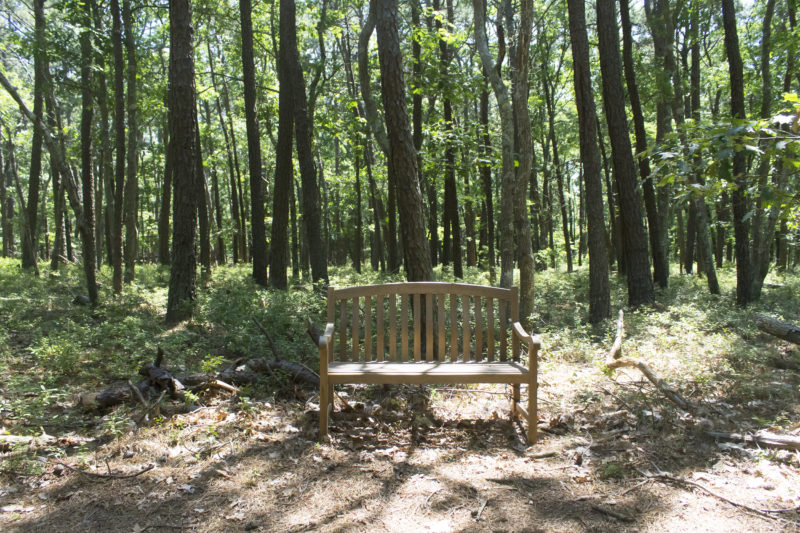West Chop Woods
Walk peaceful trails beneath a bird-filled canopy in West Chop Woods, a coastal forest on the north shore of Martha’s Vineyard. Owned by the Sheriff’s Meadow Foundation, these pitch pine woods offer a great place to get away in nature just a short walk or bike from the bustle of downtown Vineyard Haven.
Features

Stop at the bench along the green trail to enjoy a snack beneath the bird-filled canopy of West Chop Woods.
Tucked behind picturesque neighborhoods on the Vineyard’s northernmost point, West Chop Woods is a hidden gem for island explorers looking to take a relaxing walk. Old cart paths and wide, flat trails make it easy for hikers of all experience levels to enjoy a walk through this pitch pine forest.
Keen eyes will find that these woods are a great place to look out for wildflowers and unusual native plants. Best of all, West Chop Woods is just over a mile from the town of Vineyard Haven, making it easy to walk or bike to the trails alongside shopping, lunch, or a morning at the beach.
Trails
Four connected, color-coded trails of different lengths wend through West Chop Woods, making it easy to customize the length of your trip. If you’re going for a longer walk, we recommend bringing along a snack to eat on the bench on the southern end of the green trail — a great spot to appreciate birdsong echoing in the trees above. (Download trail map)
The red trail follows an old cart path called Lighthouse Road, which island residents once walked to get from Vineyard Haven to the West Chop Lighthouse. Looking to extend your adventure? You can still use this trail to visit the lighthouse: at the northernmost trailhead, turn right on Quinsigamond Avenue and then left on Main Street. You’ll find the lighthouse less than a quarter mile up the road, on your right.
Habitats & Wildlife
In the spring and early summer, West Chop Woods is a great place to spot a spectacular number of pink lady’s slippers. Often found at the junction of the blue and yellow trails, these plants stand out against the green undergrowth with their bright bulb-shaped flowers. Look out for white and pale pink mayflowers, which also bloom along the trail in early spring, while in late summer and early fall you may spot the unusual ghostly white stems of the Indian pipe. This strange plant is a parasite that gains its energy from the trees it grows on, and tends to pop out when rain follows a long dry spell.
In the canopy above, listen for the calls of chickadees, blue jays, pine warblers, nuthatch, and towhee. If you happen to be walking on these trail in the evening, you may also be lucky enough to hear the strange warble of an Eastern screech owl.


 Download Property Map
Download Property Map